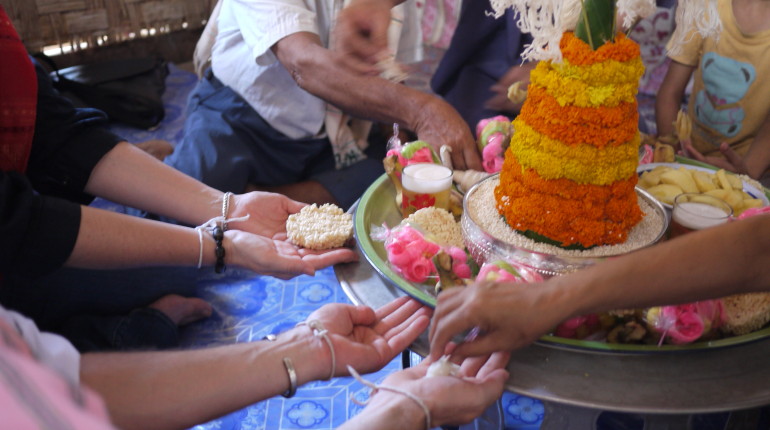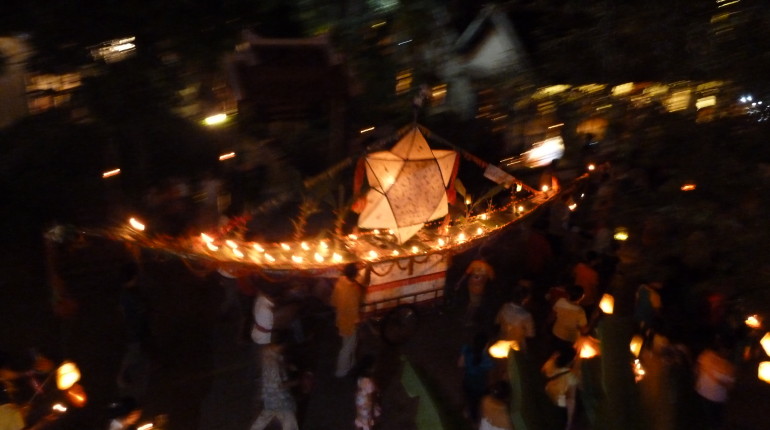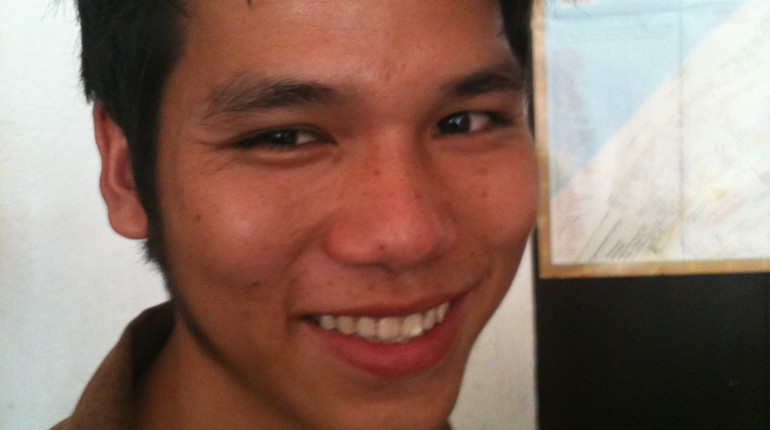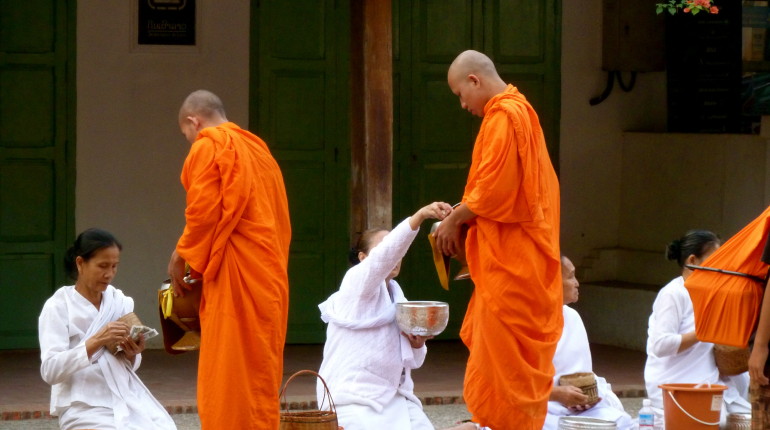True convenience
While on the phone today, I was speaking with my friend about utility bills and the process for payment. I was reminded that in Japan, you could take all of your utility bills to the local convenience store and pay them at the store.
In fact, on more than one occasion, I went on a vacation and came back to no house phone or no electricity. I simply took my bill over the the Family Mart near my house, paid the bill, and by the time I walked back to the house, my electricity would be on again. That’s true convenience!
I don’t know why we can’t do something similar here in the U.S. I realize we can pay bills online, but if you are late, normally your services are not turned back on again immediately after payment. Just a little something I loved from my Japanese life. Woo hoo for paying bills at the “konbini!”
Driving in L.A.
Recently, I’ve made a few trips up to Los Angeles to meet with clients and prospects and do some Beaming Bohemian business. You may remember that I lived in L.A. for five years before I moved to Japan in July of 2002. As apprehensive as I was at the time to move from Santa Barbara to Los Angeles, those five years provided excellent career opportunities and cemented numerous friendship and business contacts that have remained even during my eight years overseas.
The downtown revitalization had just begun when I left in 2002. At that time, many folks still drove downtown to work, and went home to the Westside. The reverse is true now. It is difficult to travel East in the evening and West in the morning. Heck, it’s tougher to travel anywhere at anytime, the housing boom even affected my little neighborhood where side streets like Ohio and Sawtelle are no-go’s by 5pm. L.A. traffic has always been, but seems even more nuts than I ever remember.
Even with L.A. drivers being more rude than San Diegans, for example, there are some disturbing trends that would really give me pause if I ever needed to move back there.
1. No one behind you for miles and you get cut off… pulls out in front of you or on the freeway or where ever. The space in front of you is just way more enticing than all the free space behind you. So much so that some folks even speed up to cut you off.
2. The folks that speed up to cut you off when you have miles of free space behind you have a tendency to do so right before an intersection where they slam on their brakes to turn right.
3. At a stop sign when you are angled to turn right, a car will pull up on your left, in what seems an effort to turn left. But the driver decides they don’t trust your judgement, nor do they want to wait for you and they turn right around and in front of you.
4. Also at a stop sign, and it seems particularly popular during the evening hours, the person behind you will pull up to the right of you and go through the intersection ahead of you instead of turn right.
5. There still seems to be no concern for crossing over five lanes on the freeway to narrowly make an exit that you know the driver takes probably everyday.
6. If a driver is in the wrong lane, it doesn’t matter where anyone else is, how it affects everyone else or how dangerous the maneuver is… it is clearly impossible to just go in the direction of traffic, out of the way for a block or so, make a u-turn somewhere and get back on track. I saw a guy in the left-hand turn lane on Overland and Pico who decided that he needed to turn right on Pico instead and bolted across the traffic at the green light so that he could go the direction he wanted.
7. The second the light turns green, everyone celebrates by honking.
8. If you do not have a green arrow to turn left, it is still expected that you will turn into oncoming traffic to make your turn. At least that’s what all the honking in the back screams. Nevermind it’s not clear, just GO!
9. If you are forced to park on the street and unlucky enough to not be able to put your front or rear bumper right up to a driveway, you will find that the kind people who have also parked on the street have made it impossible for you to move even an inch.
10. Even when the traffic is not heavy on the freeway, it seems that the general rule is to drive rightnext to the person in the next lane. Match their speed and leave no room for error.
Ten is probably enough. Truth be told, I never use my horn expect when I am in L.A. It is frustrating, it is stressful, and it makes me glad that I live in San Diego.
What L.A. driving habits have you seen develop over the last several years? Do they bother you or do you just let it roll off your shoulders?
Jury Duty
Today I fulfilled my civic duty and spent the day at the courthouse for jury duty. To be honest, I have never served jury duty before. When the papers arrived at my parents’ house, I was either away at college or overseas. There were no excuses this time, I had to go.
If you’ve never been to jury duty, you’ve never had the pleasure of hearing the judge welcome you and explain what a wonderful experience you are about to have. You also have not had the joy of watching the video which explains what jury duty is and is full of testimonials from people who have already completed their service.
Me being me, I had to write down a few of the quotes.
“Don’t worry if you get picked. You’ll be a part of an interesting process.”
“You need no special training to be a juror.”
“You will use your everyday common sense.”
It was described by one juror as a “deep and moving experience.”
Another said, “I felt good about myself.”
I’d like to believe that the process is all that. But I suspect that if the judicial system needs to go through the trouble of making a promotional video for serving on a jury duty, that the experience is far from moving and the process is not all that interesting.
Good thing I was excused.
Baci Ceremony
One of the last wonderful moments that Pete and I encountered on this vacation was to go to Aeng’s house and be treated to a Baci ceremony. Instead of trying to explain the significance and meaning myself, I share with you the Lao Heritage Foundation’s information, as it is far more accurate and certain ceremonial words are spelled correctly!
It goes without saying that being invited to someone’s home and participating in such a lovely and wonderful ceremony was truly one of the most special experiences I’ve had during all of my travels! Both Pete and Aeng teased me for getting teary eyed, but I was deeply moved and loved every moment spent with Aeng’s family and friends. We enjoyed lots of laughter during our ceremony and because we aren’t quite sure what was said, Pete and I are somewhat suspicious that the elders might have married us by accident! Ha!
I found a great article which better describes the significance of the ceremony.
The Baci Ceremony
Definition: Briefly the Baci is a ceremony to celebrate a special event, whether a marriage, a homecoming, a welcome, a birth, or one of the annual festivals. A mother is given a baci after she has recovered form a birth, the sick are given bacis to facilitate a cure, officials are honored by bacis, and novice monks are wished luck with a baci before entering the temple. The Baci ceremony can take place any day of the week and all year long, preferably before noon or before sunset. The term more commonly used is su kwan, which means “calling of the soul”.
Concept of Kwan
Kwan are components of the soul, but have a more abstract meaning than this. The kwan have been variously described by Westerners as: “vital forces, giving harmony and balance to the body, or part of it”, “the private reality of the body, inherent in the life of men and animals from the moment of their birth,” and simply as “vital breath”. It is an ancient belief in Laos that the human being is a union of 32 organs and that the kwan watch over and protect each one of them. It is of the utmost consequence that as many kwan as possible are kept together in the body at any one time. Since all kwan is often the attributed cause of an illness, the baci ceremony calls the kwan or souls from wherever they may be roaming, back to the body, secures them in place, and thus re-establishes equilibrium.
The Pha Kwan
The pha kwan is an arrangement consisting of a dish or bowl, often in silver, from the top of which sprouts a cone or horn made of banana leaves and containing flowers, white cotton or silk threads. The flowers used often have evocative meanings and symbols, such as dok huck (symbol of love), dok sampi (longevity), dok daohuang (cheerfulness/brilliance), etc. The cotton threads are cut at the length long enough to wrap around the adult wrists. These are attached to a bamboo stalk and give the impression of a banner.
Around the base of this is the food for the kwan. The food consists usually of hard boiled eggs (symbol of the fetus), fruits and sweets symbolizing the coming together of several parts, in this case the forming of a community (a stalk of bananas, khaotom-boiled sweet rice wrapped in banana leaves), bottle of rice whisky for purification, and boiled whole chicken with head and feet with claws for divination purposes.
The pha kwan is placed on a white cloth in the center of the room, with the maw pawn sitting facing the pha kwan. The person(s) for whom the baci is being held sits directly opposite of him, on the other side of the pha kwan. The maw pawn or mohkwan is a village elder, ideally an ex-monk who will be officiating the ceremony, chanting and calling the kwan.
The baci ceremony and the steps leading to it
1. Tdung pah kwan or the making of the pah kwan: This task of preparing and setting up the pah kwan or flower trays for the ceremony is often shared by elderly women in the community.
2. Somma or paying respect to the elders: Before the ceremony actually begins, the younger people would pay respect to the elders.
3. Keunt pah kwan or introduction of the ceremony: Everyone touches the pah kwan as the moh pohn chants Buddhist mantra.
4. Pitee hiek kwan or the calling of the kwan: The maw pawn calls upon the wandering kwan to return and inhabit the body of the person the ceremony is intended for.
5. Pook kwan or the tying of kwan: When the maw pawn finishes the invocation, he places the symbolic food into the upturned hand which the recipient has by now extended. The maw pawn then takes the cotton thread from the pha kwan and wraps it around the extended wrist, tying it there. While securing it with a few knots, he chants a shorter version of the invocation strengthening the power of the blessings.
6. Song pah kwan or the closing of the ceremony: Once the pook kwan is over, everyone touches the pah kwan again as a way to conclude the ceremony.
7. Sharing of a meal: After the ceremony, everyone shares a meal as a member of the community.
In Laos, white is the color of peace, good fortune, honesty and warmth. The white cotton thread is a lasting symbol of continuity and brotherhood in the community and permanence. The baci threads should be worn for at least three days subsequently and should be untied rather than cut off. Usually it is preferred that they are kept until they fall off by themselves.
The baci ceremony runs deep in the Lao psyche. In different part of the country the ceremony differs slightly in meaning. In general, it is nonetheless an emphasis of the value of life, of social and family bonds, of forgiveness, renewal and homage to heavenly beings.
Article by Pom Outama Khampradith, Bounheng Inversin, and Tiao Nithakhong Somsanith
Bun Ook Pan Saa II
I love festivals. I think you all know this by now, especially if you’ve been following ON THE BRIGHT SIDE since the days I wrote from Japan. My first festival was the Fuji festival, where I first lived in Japan. One of the last festivals I watched in Japan was the Fire Festival in Fujieda (Rokusha Shrine Fire Festival). My favorite of all in Japan, though, was probably the Fukuroi Fireworks. Two hours of non stop fire works, young and old, men and women dressed in yukata…that was a very special night.
Last year, I happened to be in Laos during a special holiday called Bun Ook Pan Saa or end of the Buddhist lent. I enjoyed seeing hundreds of candles floating down the Mekong River, locals dancing in front of their homes and shops, and everyone lighting sparklers, fireworks and little whizzers and things which pop. I knew last year that I had to comeback.
This year, I was excited to enjoy all aspects of the festival. Pete and I planted our bums on the balcony of Tam Nak Lao restaurant, ordered Beer Lao and far too many dishes and waited for the procession of floats to come down the street. This is a parade and a festival in one – bonus! All sorts of people walked down the street along side those carrying the floats made of colored paper mache, and little bottles serving as lanterns all held together with a bamboo frame (bamboo, paper and fire together – totally safe!). The floats are taken to the main temple and then to the pier where they are launched into the water, even escorted by a team of people in a long boat.
The floats are all made by the monks in the temples and they are just beautiful. I’m not so good at night photography, so my photo doesn’t capture these so well, but I hope you get the idea!
What was so fun is that there are fireworks for sale everywhere you go. And everyone is lighting and shooting them off. Pete and I turned into 12 year olds and bought a butt load of poppers, cherry bombs and all sorts of other goodies. The large firework we bought, we ended up lighting in one of the temples. You see, the monks, after all their hard work to make the floats, decorate the temples and after a 3 month lent…well, they can’t really celebrate like everyone else. They are not allowed to participate. And most of them are teenagers and young men and you can see that it’s just killing them to not go out of the temple grounds. We were at the same temple where I met Bo and Kit in August, and I was able to find Bo and chat with him again before we lit the big firework. It was nice to see him again and he was glad for the visit.
We ended up hanging out with some locals…it was nice to bring our little candle to the pier among the crowds and have some little kid swim it out to a point where the current would pick it up. (We paid him in fireworks, which was completely agreeable by him!)
I just loved it. I loved the chaos, the beauty, the colors, the fireworks, the music and dancing….it was a real celebration and I am glad I made a point to enjoy it.
Meet Aeng!
When Pete returned from Luang Prabang with his friend Josh, he told me how much he fell in love with the UNESCO protected city. And he told me how he met Aeng, a tuk tuk driver which became tour guide and friend.
Aeng is from a small and poor village just a bit outside Luang Prabang. This is s story typical of most people in Laos. His father is much older, about 70, Aeng is only 21. He has a handful of brothers and sisters. His mother is deceased. Upon being widowed, his father was called to the temple, where he is now a monk. One of Aeng’s brothers is also a monk at that temple. And Aeng was a monk there for several years, as well. (You can remember from my monk chat in Chiang Mai that not all boys/men who join the monastery stay on as a monk.)
Aeng now drives a tuk tuk to make money and pay for his schooling. He wants to study English. His story is similar to others in that most young people are working in hospitality and tourism to pay for their schooling. While Aeng is fortunate to live pretty close to Luang Prabang, others are from villages which are four, seven or more hours away by bus. Those students are usually working seven days a week and live in a shared room (like six people to a small apartment).
After Pete and Josh first met Aeng a few months ago, they decided that they wanted to sponsor him and his education. Now that I’ve gotten to know Aeng, have met his father at the temple, have visited his family, I am really glad Pete and Josh found Aeng and that they are equipped to help him. When Pete goes back to Luang Prabang in December with his mom, I think I’m going to chip in as well because I believe this young man needs a chance to make his life better and is responsible enough to see his plans through and assist his family as well. I’m really thankful to know him and to have him as a friend. In the least, he keeps me humble.
Giving Alms
Today was such a special day. We got up at 5am and met our friend Sith at 5:30am to give alms to the Monks. This is a daily ritual in Luang Prabang, but today was special because it was the dawn of the day which was the end of the 3 month Buddhist Lent. Most mornings, men and women line the streets and provide alms to the monks. The offer mostly sticky rice, boiled eggs and some bags of veggies or other healthy items. But because today was a celebration for all…wow…it was amazing! I really honestly believe that everyone who lives in Luang Prabang was in the streets. And it wasn’t just adults. Kids were awake too and they were eager to participate. And in addition to sticky rice, the monks received plenty of treats and snacks. The mood was festive and upbeat and Pete and I felt really lucky to be invited to participate as a local…not just take pictures like all the other tourists.
We did feel a little funny, though, as Sith and his girlfriend lead us from one street to the next so we could give out as much as possible. At one point, we were actually running ahead of the monks so we could get in line and give out alms. Important to note that women, like the nuns in this picture, must kneel. Men can stand.
Alongside of the monks, young boys walked beside them with large baskets filled with all the treats the monks receive. You see, the monks receive so much more than usual, they need to dump their bowls in order to receive more and finish their rounds in the neighborhood.
Once the monks have finished receiving their alms, they return to their temple, divide the food up among all of the monks, keeping just a meager amount for themselves, and then prepare offering to Buddha and many gifts for the poor. All day families bring their tray of offerings to have blessed by the monks, which later they will eat at home. It’s really a special time to be in Laos, and this Buddhist holiday is precisely why Pete and I chose this weekend to visit. Just wait till I tell you about the festival!
Have a look at my photos from Luang Prabang – more than just morning alms!
On the Bright Side,
Shanna
Get Bright Life E-News
Get free education and updates from Bright Life Media. E-news contains exclusive content for subscribers only. Say YES to a Bright Life now!










